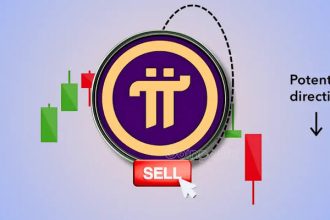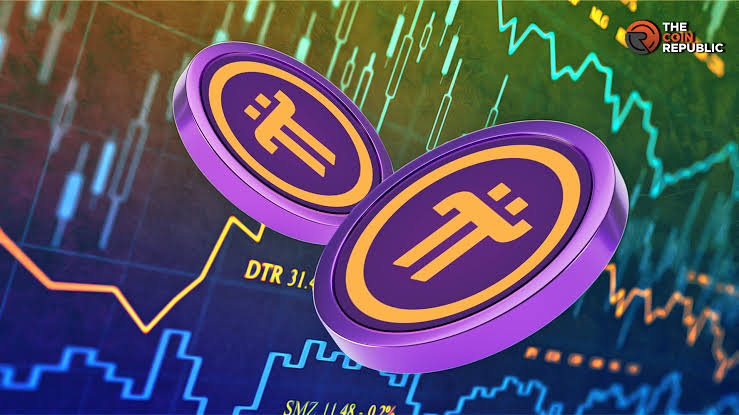Since its inception in 2019, Pi Network has been one of the most talked-about blockchain projects in the world. From its grassroots model of allowing users to “mine” Pi on their mobile phones to its gradual rollout of a decentralized ecosystem, Pi has amassed a global following of more than 45 million engaged users. For years, skeptics dismissed it as vaporware, but with the official launch of the mainnet in February 2025, Pi has crossed a critical threshold.
This article provides a comprehensive analysis of Pi Network’s latest progress, unpacking the implications of its token migration policies, examining the Testnet1 upgrade, spotlighting ecosystem innovations like PiOnline, and assessing market sentiment as supply dynamics evolve.
Mainnet Since February: The Core Transition
Launch Recap
When Pi Network officially launched its mainnet in February 2025, it marked the end of years of beta testing and skepticism. For many early pioneers who had mined Pi coins through the mobile application since 2019, the transition to mainnet represented the first tangible proof that their years of patience might hold economic value.
However, Pi’s team adopted a phased approach to the transition. Instead of allowing instant, unrestricted transfers, they placed the emphasis on:
- KYC (Know Your Customer) Verification – ensuring only verified human users could migrate balances.
- Balance Mapping – moving mined balances from the enclosed ecosystem into mainnet accounts.
- Unlock Scheduling – introducing coins gradually to avoid sudden oversupply shocks.
This cautious approach was controversial but strategically aligned with Pi’s philosophy of long-term sustainability rather than short-term hype.
September Spotlight: Migration and Unlock Dynamics
As of September 2025, the biggest driver of community attention is the ongoing migration of balances.
- Only KYC-verified users who completed their verification by March 2025 are currently eligible to migrate their mined Pi coins into mainnet wallets.
- Those users are now experiencing staggered token unlocks, meaning their balances are being gradually made transferable instead of all at once.
- Users who missed the KYC deadline remain excluded for now, fueling debates about fairness and the urgency of new onboarding rounds.
Why Unlocks Matter
The process of unlocking balances has two opposing effects:
- Optimism – Large-scale migrations mean Pi is moving closer to real-world liquidity and broader adoption. This excites both users and developers who have been waiting for years.
- Concern – More unlocked tokens entering circulation could create supply pressure, pushing prices downward if demand does not keep pace.
The balance between these two forces will likely define Pi’s short-term market dynamics and long-term sustainability.
Protocol Upgrade: Testnet1 to Version 23
Beyond token unlocks, September also saw a critical technical upgrade. Pi’s Testnet1 environment migrated to protocol version 23, aligning it with Stellar’s v23 framework.
This upgrade is more than just a version bump. It provides the infrastructure necessary for:
- Smoother balance mapping from testnet to mainnet.
- Improved scalability for handling thousands of transactions per block.
- Better developer compatibility with existing blockchain tools.
By integrating Stellar’s latest framework, Pi is signaling its intent to remain compatible with industry standards while still retaining its unique identity as a mobile-first, mass adoption-focused blockchain.
Pi on the Global Stage: TOKEN2049 Singapore
Pi Network also made a strategic appearance at TOKEN2049 Singapore, one of the largest crypto and Web3 conferences in Asia.
As a gold sponsor, Pi demonstrated that it is not merely a grassroots experiment but also a project willing to compete for visibility in the global blockchain arena.
At the event, Dr. Chengdiao Fan, Pi’s co-founder, outlined the next phase of development, emphasizing:
- The importance of ecosystem growth through developer participation.
- Building utility-driven applications rather than relying on speculation.
- Integrating real-world use cases that cater to Pi’s massive user base.
This messaging fits Pi’s long-standing narrative — that it seeks to create a usable, human-centric digital currency rather than just another volatile crypto token.
Ecosystem Growth: PiOnline and Early Utility
One of the biggest criticisms of Pi has been its lack of utility. While millions mined Pi coins, there were few real ways to spend or use them.
That is beginning to change with PiOnline, a DeFi farming game launched within the Pi Browser.
What PiOnline Offers:
- A gamified DeFi experience where users can stake Pi tokens and earn in-game rewards.
- Early experimentation with decentralized finance within the enclosed Pi ecosystem.
- A demonstration of how Pi coins could function in microeconomies, gaming, and digital engagement.
Though still modest, PiOnline represents a crucial proof of concept. It shows that Pi developers are experimenting with ways to give tokens tangible use cases, which is essential for sustaining long-term adoption.
Web3 + AI: The OpenMind Partnership
September also brought news of a partnership between Pi Network and AI firm OpenMind.
This collaboration reflects two major trends converging:
- Web3 adoption – the shift toward decentralized ownership and peer-to-peer interactions.
- AI integration – enhancing personalization, prediction, and automation in blockchain apps.
For Pi, which has positioned itself as a project for the “everyday person,” integrating AI could make its apps smarter, more intuitive, and more accessible to a mainstream audience.
Potential applications include:
- AI-powered KYC and fraud detection.
- Personalized dApp recommendations within the Pi Browser.
- AI-assisted financial tools for microtransactions and savings.
This partnership highlights Pi’s forward-looking strategy — leveraging AI not just as a buzzword but as a utility-enhancing tool for its ecosystem.
Market Sentiment: Price and Supply Debate
With the unlocks ongoing, traders and users alike are debating what comes next for Pi’s price.
Bullish View
- Unlocks equal greater legitimacy — coins that can move are coins that matter.
- Utility apps like PiOnline and partnerships like OpenMind create demand drivers.
- Pi’s large user base represents a network effect unmatched by most new blockchains.
Bearish View
- Supply pressure from unlocks could outpace demand, pushing prices down.
- Lack of major exchange listings still limits liquidity.
- Skepticism about Pi’s long-term deliverability continues to linger.
At the time of writing, Pi trades in the secondary markets between $0.30 and $0.40, but this is far from its speculative highs seen in previous cycles. The real test will come once larger unlocks are completed and Pi must rely on utility and adoption rather than scarcity to sustain value.
The Road Ahead: Challenges and Opportunities
Challenges
- Liquidity Management – Avoiding price crashes as unlocks increase supply.
- Exchange Listings – Securing credible, regulated listings without compromising Pi’s gradual rollout strategy.
- Utility Proof – Expanding beyond PiOnline to deliver apps that drive mass adoption.
Opportunities
- Massive User Base – 45M+ engaged users represent a strong foundation.
- AI + Web3 Synergy – OpenMind partnership could create unique value.
- Global Branding – Events like TOKEN2049 cement Pi as a serious contender.
Conclusion
Pi Network’s September 2025 chapter reflects both progress and tension. On one hand, the project is moving steadily toward real adoption:
- Mainnet operations are live.
- KYC migrations are happening.
- Testnet upgrades are aligning with industry standards.
- Ecosystem apps are emerging.
- Partnerships are broadening Pi’s scope.
On the other hand, the very success of these transitions raises new challenges: how to manage supply, maintain price stability, and ensure long-term relevance in a highly competitive crypto landscape.
What is clear is that Pi is no longer just an experiment or a promise. The September unlocks, protocol updates, and ecosystem expansions prove that the network is alive, evolving, and gaining traction.
For its millions of pioneers worldwide, the road to adoption is far from complete, but September 2025 may be remembered as the month Pi turned a corner from speculation to substance.












